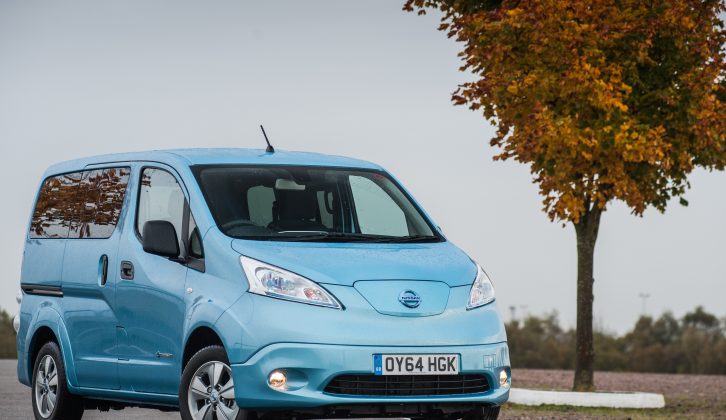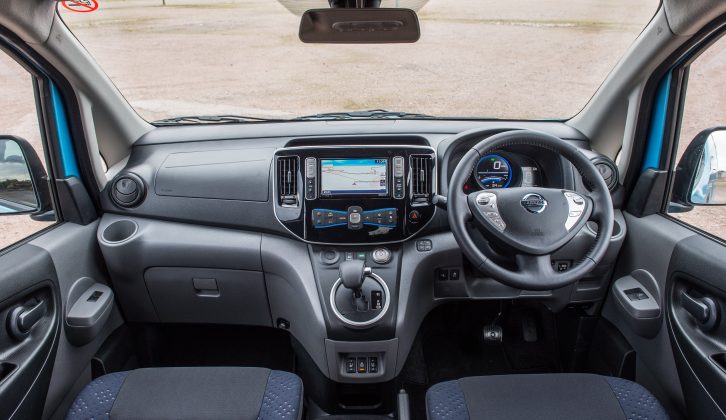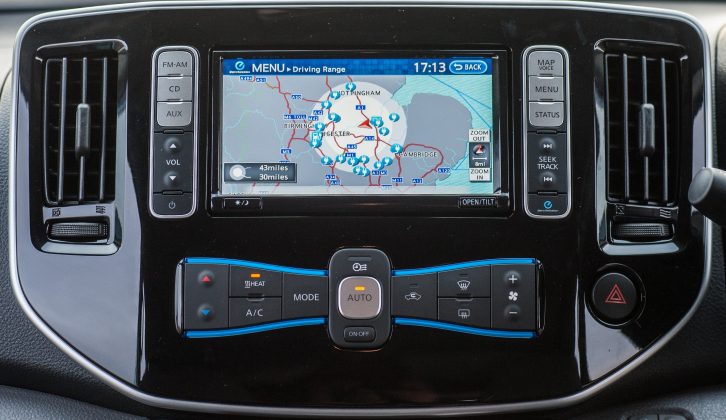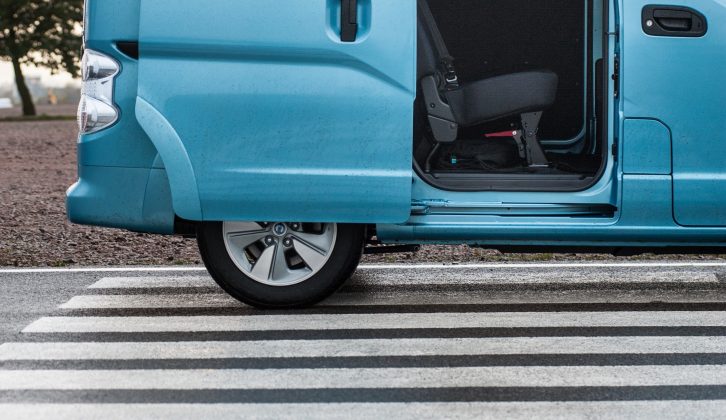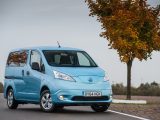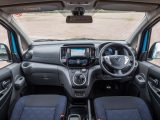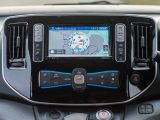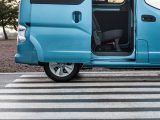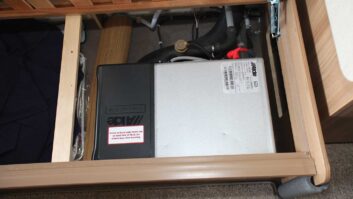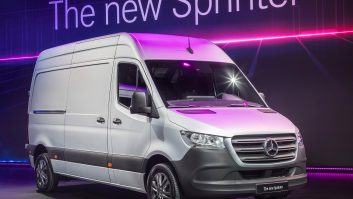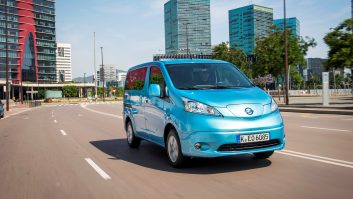When we heard about the world’s first production electric campervan, we were intrigued and keen to find out more. Can a ‘van with such a limited, 106-mile range really be a practical solution for adventurous, go anywhere motorcaravanners? And what is it going to be like to drive and live with?
Called the Hillside Dalbury E, this ‘van is being produced by the Derby based campervan specialists at Hillside Leisure. Practical Motorhome’s Editor Niall Hampton had the opportunity to look inside this British, trailblazing campervan at the NEC Motorhome and Caravan Show. And a few days after that, I had the chance to drive the vehicle upon which this motorhome is based, the Nissan e-NV200, to get our first taste behind the wheel.
But first, the science bit. The e-NV200 is a melding of two Nissan products. Beneath the structure of the NV200 van is the electric drivetrain from the Leaf, the firm’s compact, five-door hatchback. The e-NV200 is no mishmash, though, it’s a model in its own right, as more than 30 per cent of the parts are unique to it.
Power comes from an 80kW AC synchronous electric motor and an advanced lithium-ion battery. The motor, battery charger and inverter sit together, in the engine bay, meaning the van’s load lugging abilities aren’t compromised. The compact, lithium-ion battery pack powering the e-NV200 has 48 24kWh modules, each of which holds four cells. Designed specifically for this application, each battery pack weighs 267.5kg, making it 7.5kg lighter than that in the Leaf, as well as being narrower and shorter. A flat underfloor aids aerodynamics, to the benefit of efficiency, meaning you’ll get further on less juice.
You can charge the campervan using a standard domestic 10A power supply, or with a 16A charger – a full charge using a 16A charger takes eight hours. Just like its sibling, the Nissan Leaf, the e-NV200’s charging port is on its nose – you can see it from the driver’s seat. Open the door via the key fob or a switch in the cabin and you’ll find an LED lamp to illuminate the sockets after dark. The charging port’s door has an electro-mechanical lock, so it can’t be tampered with when charging is in progress.
And if you buy the Hillside Dalbury E, and are staying at a campsite with electric hook-ups, you can also charge the vehicle and leisure batteries simultaneously. A 230V socket next to the charging point allows you to plug in a cable to feed the leisure battery – how good is that? And this canny campervan also benefits from the back-up of a solar panel.
So, what is the Nissan e-NV200, on which the Hillside Dalbury E campervan is based, like to drive? One of the big challenges faced by manufacturers of electric cars, vans and so on is to make the transition from driving an internal combustion engined vehicle to an electrically powered one as smooth as possible, so as not to frighten buyers. In this regard, the e-NV200 succeeds.
It feels as van like and conventional as any other campervan. Granted, there’s no aural accompaniment from under the engine. You cruise along in near silence, an occasional electric whir filling the air, but nothing else.
The Nissan surreptitiously gains speed, so you’ll be grateful for the speedo’s large numbers on the dash. The LED instrument panel also has a power meter (which shows the state of energy regeneration and power consumption), a state of charge meter which tells you how much range remains, plus a battery discharge meter. It takes a bit of time to get used to the initially overwhelming array of information before you, but come the end of my short drive, I was au fait with it.
Of course, I drove this van unloaded, thus the rear was lighter and noisier than it would be in campervan guise, packed and ready for your holidays, plus with just two adults on board, its powertrain wasn’t going to be strained. Still, it was an easy, relaxing drive, the van very manoeuvrable. Eco mode changes the e-NV200’s throttle mapping for smoother acceleration, while this and the default D mode both have a B setting, bringing additional regenerative braking when you’re coasting.
It all sounds like a lot’s going on, but you don’t notice it. It’s a very seamless driving experience. You also don’t notice the fact that the e-NV200 musters just 80kW, albeit backed up by 187lb ft torque – on paper, they’re not earth-shattering figures, but on the road you never feel the need for more.
With a maximum payload of 703kg and a range of 106 miles, according to official figures, it’s clear that, at present, the Nissan e-NV200 based Hillside Dalbury E is a campervan for those who don’t rack up high daily mileages on tour, and perhaps those who plan their trip around stop-offs. However, as a product, the e-NV200 proved itself to be competent and well resolved.
The world’s first production electric campervan is here. And the inexorable march of technology being what it is, we think it’s going to be the first of many. Are you on board?
You cruise along in near silence, an occasional electric whir filling the air
